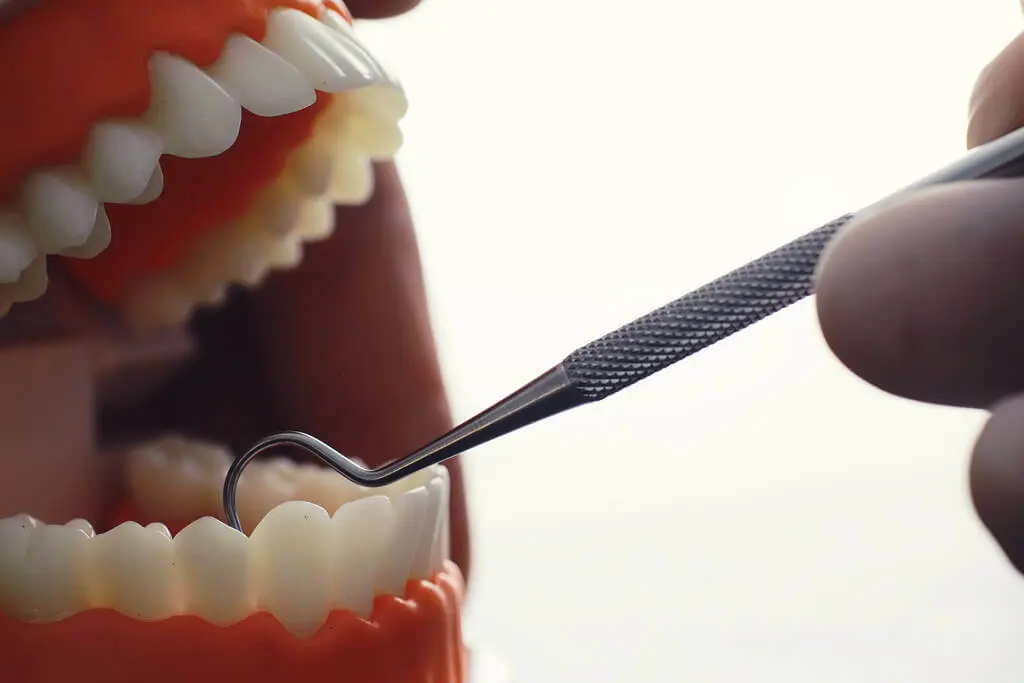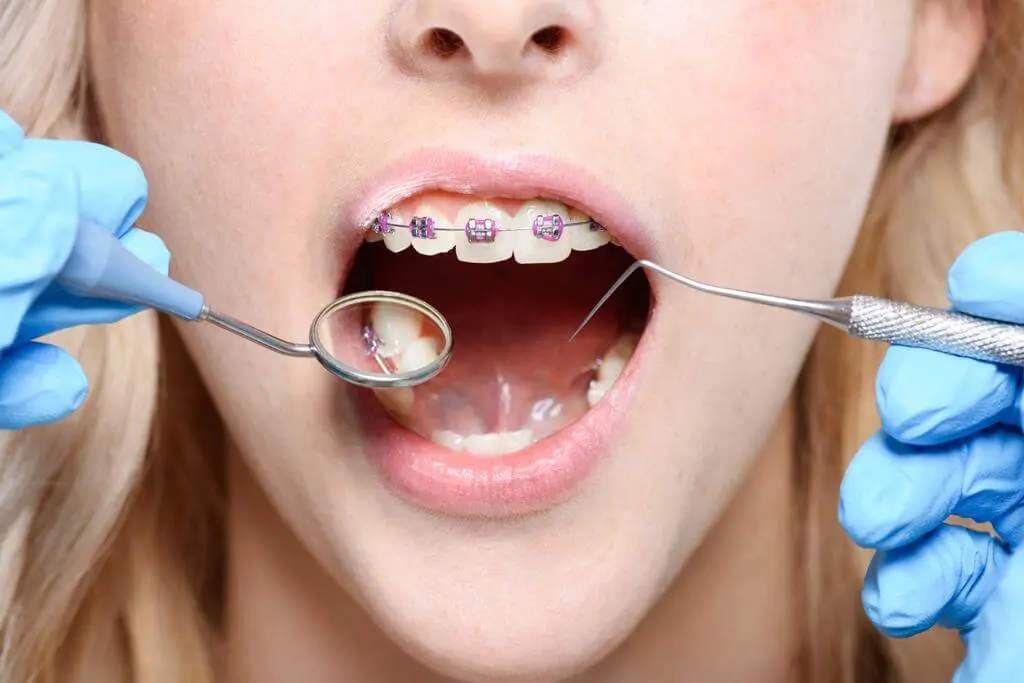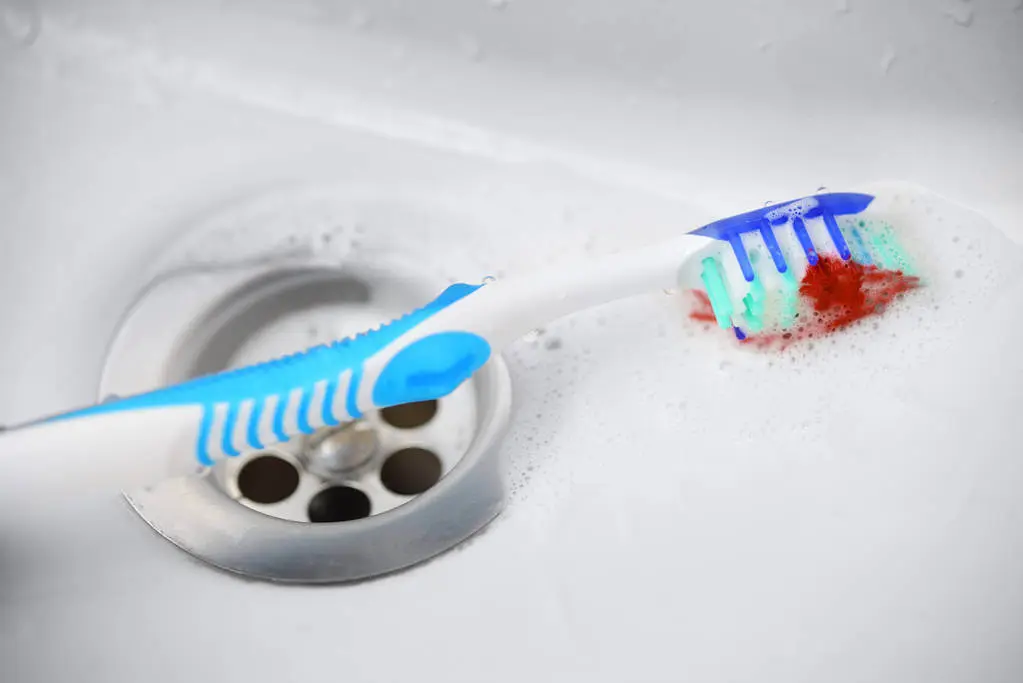Definition of Gingivitis
Gingivitis is a common oral health issue characterized by inflammation of the gums, particularly the gingival tissues surrounding the teeth. It is an early stage of gum disease, also known as periodontal disease, and if left untreated, it can progress to more severe forms of periodontal disease, leading to tooth loss and other complications.
Symptoms of Gingivitis
Gingivitis, the early stage of gum disease, is a common oral condition characterized by inflammation of the gum tissue. Recognizing the symptoms of gingivitis is crucial in order to seek timely treatment and prevent further complications.
One of the key indicators of gingivitis is gum inflammation. The gums may appear red and swollen, and they may feel tender to the touch. Additionally, bleeding gums, especially during brushing or flossing, are often a sign of this condition.
Another noticeable symptom is bad breath, also known as halitosis. Bacteria in the mouth release toxins that cause an unpleasant odor. If you’re experiencing persistent bad breath, it may be a sign of gingivitis.
It’s important to note that the severity of these symptoms can vary. In some cases, individuals may only experience mild redness or occasional bleeding, while others may have more pronounced symptoms.
Regular dental check-ups are essential for early detection of gingivitis and proper treatment. Maintaining good oral hygiene practices, such as brushing twice a day, flossing, and using mouthwash, can help prevent gingivitis. If you notice any of these symptoms, it is important to consult with your dentist to develop a treatment plan and avoid the progression of gum disease.
The Causes of Gingivitis
Gingivitis, an inflammatory condition of the gums, can be caused by various factors.
Bacteria in the Mouth
Bacteria in the mouth play a significant role in the development of gingivitis, a common form of gum disease. When oral hygiene is neglected, bacteria can accumulate on the teeth and along the gumline, leading to inflammation in the gums.
Poor oral hygiene allows bacteria to thrive and form a sticky film called plaque. This plaque build-up provides an ideal environment for bacteria to flourish and multiply. As the bacteria continue to grow, they release toxins that irritate the gum tissues, triggering an inflammatory response.

Several types of bacteria are commonly found in the mouth, with some having a more significant impact on gum health than others. For example, Porphyromonas gingivalis is known to be one of the major contributors to gum inflammation. Other types of bacteria, such as Prevotella intermedia and Fusobacterium nucleatum, can also cause gum problems when their numbers increase.
These bacteria provoke an immune response, leading to the release of inflammatory mediators that contribute to gingivitis. If left untreated, the inflammation may progress, causing damage to the soft tissues and the underlying connective tissue that support the teeth. This can eventually lead to more severe gum diseases, tooth loss, and other oral health issues.
Poor Dental Hygiene
Poor dental hygiene plays a crucial role in the development of gingivitis. When proper oral hygiene practices are not followed, bacteria are allowed to thrive and form a sticky film known as plaque. This plaque buildup provides an ideal environment for bacteria to multiply and release toxins that irritate the gum tissues.
Failure to remove plaque effectively allows it to harden and turn into tartar, which is a more stubborn and difficult substance to remove. Tartar accumulation further exacerbates the inflammation of the gums, leading to gum disease.
While at-home oral hygiene is essential, it is also important to schedule regular visits to a dental professional for professional dental cleanings. These cleanings can remove plaque and tartar that cannot be effectively removed through at-home practices alone. Professional dental cleanings not only help to prevent and treat gingivitis but also contribute to overall oral health and hygiene.
Hormonal Changes and Illness
Hormonal changes and illness can significantly impact oral health, including the development and progression of gingivitis. During puberty, pregnancy, and menopause, hormonal fluctuations can create an environment in which the gums are more susceptible to inflammation and infection.
Puberty is a time when hormonal levels are surging, leading to increased blood flow to the gums. This hormonal flow can trigger an exaggerated response to plaque and bacteria, making the gums more prone to inflammation and gingivitis. Similarly, during pregnancy, elevated hormone levels, specifically progesterone, can disrupt the body’s natural inflammatory response, leading to a heightened risk of developing gingivitis.

Menopause also brings hormonal shifts, particularly a decrease in estrogen levels. This hormonal imbalance can result in changes to the gums and oral tissues, making them more vulnerable to infection and gingivitis.
In addition to hormonal changes, certain illnesses can also increase the risk of gingivitis. Diseases such as diabetes and HIV weaken the immune system, compromising the body’s ability to fight off gum infections effectively. Moreover, diabetes affects blood circulation, impairing the delivery of essential nutrients and oxygen to the gums, which can further exacerbate inflammation.
Smoking and Other Habits
Smoking and certain habits can have a significant impact on the development and progression of gingivitis. One of the most notable habits is smoking, which not only harms overall health but also weakens the immune response and promotes the growth of harmful bacteria in the mouth.
Smoking weakens the immune system, making it less able to effectively fight off infections, including gum infections. This compromised immune response allows bacteria to thrive in the mouth, leading to increased inflammation and periodontal disease. Furthermore, smoking can restrict blood flow to the gums, depriving them of essential nutrients and oxygen, further contributing to inflammation and impaired healing.
In addition to smoking, other habits such as poor nutrition and excessive alcohol consumption can also contribute to the development of gingivitis. A diet lacking in essential vitamins and minerals weakens the immune system and hampers the body’s ability to heal and fight off infections. Excessive alcohol consumption can lead to dry mouth, reducing saliva production and allowing bacteria to flourish.
To minimize the risk of gingivitis, it is crucial to quit smoking and adopt healthy habits. This includes maintaining a balanced diet rich in vitamins and minerals, moderating alcohol consumption, and practicing good oral hygiene.
Genetics and Ageing
In the context of gingivitis, the relationship between genetics and ageing plays a significant role in an individual’s susceptibility to gum disease. As we age, natural changes occur in our bodies, including those in the oral cavity, which can influence the development and progression of gum disease.
Research has shown that genetic factors contribute to an individual’s predisposition to various diseases, including gum diseases like gingivitis. Certain genetic variations can increase a person’s susceptibility to the signs of gum disease as they age. These genetic factors can affect the immune system’s response to oral bacteria and the body’s capacity to repair and regenerate gum tissues.
Specific genetic variations that have been associated with an increased risk of gingivitis include variations in genes involved in the inflammatory response, immune function, and tissue integrity. For example, variations in genes encoding inflammatory mediators like interleukins and tumor necrosis factor-alpha can increase the likelihood of chronic inflammation and higher gingivitis risk. Variations in genes related to connective tissue and collagen degradation have also been linked to increased susceptibility to gum diseases.

Understanding the influence of genetics and ageing in gingivitis susceptibility is crucial for effective preventive measures and personalized treatment strategies. Recognizing individuals with a higher genetic risk can help target interventions and promote early detection of gingivitis, preserving oral health as we age.
By considering both genetic and environmental factors, comprehensive oral care can be provided to prevent and manage the development of gum diseases, promoting optimal oral health throughout the ageing process.
Certain Medications
Certain medications can contribute to the development or worsening of gingivitis, and it is important to be aware of these potential risks. Some common medications that have been associated with an increased risk of gingivitis include anticonvulsants, calcium channel blockers, and immunosuppressants.
Anticonvulsants, which are commonly used to treat seizures and epilepsy, have been found to contribute to gum problems. These medications can cause overgrowth of gum tissue, known as gingival hyperplasia, making it easier for bacteria to accumulate and increasing the risk of inflammation and gum disease.
Calcium channel blockers, often prescribed for high blood pressure and heart disease conditions, can also affect oral health. These medications can cause gum swelling and enlargement, leading to an increased susceptibility to gingivitis. The swollen gums might create pockets where bacteria can thrive, further exacerbating the inflammation and contributing to gum disease.

Immunosuppressants, which are prescribed to suppress the immune system in transplant recipients or individuals with autoimmune diseases, can also impact oral health. The immune system plays a crucial role in fighting off bacteria that cause gum disease. By suppressing the immune response, these medications can weaken the body’s defense mechanisms against oral bacteria, increasing the risk of gingival recession.
It is important for individuals taking these medications to maintain excellent oral hygiene practices and to closely monitor their gums for any signs of inflammation or gum disease.
Diagnosing Gingivitis
Diagnosing gingivitis involves a comprehensive examination of the gums and teeth to identify signs of inflammation and assess the overall oral health of an individual.
Clinical Exam
A clinical exam is an essential step in diagnosing gingivitis and evaluating the overall oral health of a patient. This examination involves a thorough assessment of the teeth, gums, and surrounding tissues to identify any signs of inflammation or other dental issues.
During the clinical exam, the dentist or dental hygienist carefully inspects the oral cavity, looking for visible signs of inflammation in the gums. They may use a periodontal probe to measure pocket depths around each tooth and check for bleeding points, which are a common indicator of gingivitis. By evaluating the color and texture of the gingival diseased tissue, they can assess the severity of the inflammation.
The examination also includes a comprehensive assessment of the teeth, looking for any signs of decay, cracks, or other abnormalities. The dentist may inspect the gum line for any signs of gum recession, which is often associated with periodontal diseases.
Overall, the clinical exam focuses on evaluating the oral health status of the patient. By assessing the appearance of the teeth, gums, and surrounding tissues, dental health professionals can diagnose gingivitis and provide appropriate treatment recommendations.
Signs of Inflammation Around the Teeth & Gums
Signs of inflammation around the teeth and gums are important indicators of the presence of gingivitis. When examining the oral cavity, dentists and dental health hygienists look for common symptoms that signify inflammation.
One visual cue of gingivitis is redness in the gum tissue. Healthy gums are typically a light pink color, but inflamed gums appear redder and can sometimes be swollen. Another telltale sign is tenderness – inflamed gums may feel sensitive or painful to the touch.
Bleeding during brushing or flossing is another common symptom. Healthy gums should not bleed, so this is a clear indication of inflammation. Additionally, the formation of deep pockets between the teeth and gums is a sign of gingivitis. Normally, there is a shallow space where the gum tissue meets the tooth, but when inflamed, the pocket depth increases.

Receding gum line is another indicator of gum inflammation. As the gums recede or pull away from the teeth, more tooth structure becomes exposed. This can lead to tooth sensitivity and potential tooth loss if left untreated.
Persistent bad breath, often described as unpleasant or foul, is another symptom of gingivitis. The bacteria present in the inflamed gums release volatile sulfur compounds, causing the unpleasant odor.
By identifying these signs of inflammation, dental professionals can diagnose gingivitis early and develop an effective treatment plan to restore oral health.
Soft Tissue Examination & Bleeding Points Test
Soft tissue examination and bleeding points test are crucial in assessing the severity of gingivitis. Conducting a comprehensive examination of the gum tissues provides valuable insights into the inflammatory status of the periodontal tissues.
To perform a thorough examination, a dental professional visually inspects the gums for signs of inflammation such as redness, swelling, and tenderness. The presence of these indicators signifies an immune response triggered by bacteria in dental plaque. Additionally, the gums may appear shiny and stretched due to swelling.

Another key aspect of the examination is assessing bleeding points. This is done using a periodontal probe, a thin instrument used to measure pocket depths. The probe is gently inserted into the space between the gums and teeth, and if bleeding occurs, it indicates inflammation and gingival disease. The severity of bleeding and the depths of the pockets are important factors in determining the stage and progression of gingivitis.
By combining the findings from the soft tissue examination and bleeding points test, dental professionals can accurately assess the severity of gingivitis. This assessment provides a roadmap for appropriate treatment and preventive measures, aiming to restore periodontal health and prevent further damage to the gum tissues.
Testing for Bacterial Growth in the Mouth
Testing for bacterial growth in the mouth is an essential step in diagnosing and treating gingivitis. Dentists utilize various methods to identify the presence of bacteria in the oral cavity, including assessing clinical signs, conducting a soft tissue examination, and performing a bleeding points test.
Clinical signs such as redness, swelling, and tenderness of the gums can indicate the presence of bacterial infection. A dental professional visually inspects the gums for these signs of inflammation. Additionally, the gums may appear shiny and stretched due to swelling, which can also be indicative of bacterial growth.
During a soft tissue examination, a periodontal probe is used to measure pocket depths, which are the spaces between the gums and teeth. If bleeding occurs during this measurement, it suggests inflammation and gingival disease. The severity of bleeding and the depths of the pockets help determine the stage and progression of gingivitis.

Various methods are used to test for bacterial growth in the mouth. DNA testing can identify specific bacterial strains present. Bacterial cultures involve collecting a sample from the oral cavity and growing the bacteria in a specialized medium for identification. Salivary diagnostics analyze saliva to detect the presence of bacteria associated with gingivitis.
Testing for bacterial growth in the mouth is crucial for the accurate diagnosis and effective treatment of gingivitis. By identifying the specific bacteria causing the infection, dental professionals can tailor treatment plans to target and eliminate the harmful bacteria, promoting healing and restoring oral health.
Treatment for Gingivitis
Treatment for Gingivitis:
1. Professional Dental Cleanings: Regular visits to the dentist for professional cleanings are crucial in the treatment of gingivitis. The dental professional will use specialized tools to remove plaque and tartar buildup from the teeth and gum line, reducing inflammation and promoting gum health.
2. Improved Oral Hygiene Practices: Effective oral hygiene practices play a significant role in treating and preventing gingivitis. This includes brushing the teeth at least twice daily with a soft-bristled toothbrush and fluoride toothpaste, as well as flossing daily to remove plaque and food particles from between the teeth and along the gum line.

3. Antimicrobial Mouthwashes: Dentists may recommend antimicrobial mouthwashes to help reduce the bacteria in the mouth that contribute to gingivitis. These mouthwashes contain ingredients such as chlorhexidine or essential oils that help kill bacteria and reduce inflammation.
4. Antibiotics: In some cases, dentists may prescribe antibiotics to treat severe or persistent cases of gingivitis that haven’t responded to other treatment methods. Antibiotics help eliminate the bacteria causing the infection and reduce inflammation.
Preventing the progression of gingivitis into periodontal disease is crucial. Regular dental check-ups are important for early detection and intervention. Dentists can monitor the condition of the gums, provide additional treatment if necessary, and offer guidance on maintaining good oral hygiene practices at home.
By adopting a consistent oral care routine and seeking professional dental care, individuals can effectively treat gingivitis and prevent further complications, such as periodontal disease and tooth loss.





